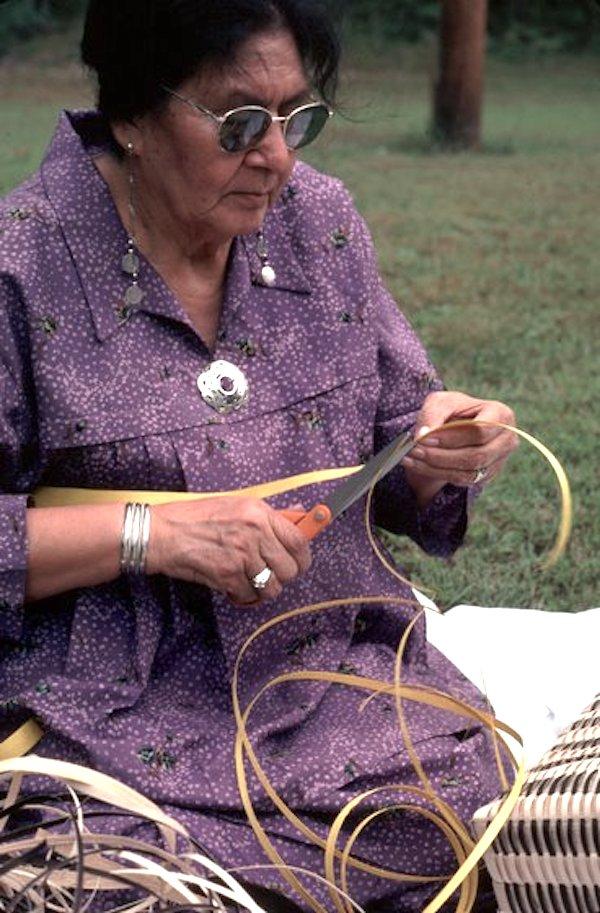Lila Greengrass Blackdeer

Photo by Lewis Kotch
Bio
Lila Greengrass Blackdeer was born February 14, 1932, in Black River Falls, Wisconsin. She first learned black ash basketmaking to help supply her family's roadside basket stand on Highway 12 near her hometown. "My mother was Bessie Youngbear," she said, "father was Edwin Greengrass. My Indian name is Masuhijajawiga (Changeable Feathers). ...I learned basketry when I was young. My mother made baskets, and I worked with scraps; gradually, I learned how. Usually it was little sewing baskets, then larger baskets when I was older. I still make baskets in the summer; I don't take orders, but I make them for myself or to give away."
After marrying Bill Blackdeer in 1954, she cultivated her mastery at making the full range of Hocak women's clothing: moccasins tanned with deer brains; skirts with reverse appliqué; wa wa jeh, or ribbonwork; fingerwoven yarn sashes; and the beaded hair wrap known as pah-keh used by female traditional dancers. She learned mainly from her husband's aunt Alice Blackdeer Hopkinkah, but she sought out other master artisans as well, to learn both techniques and the rich store of cultural meaning embodied in the crafts. As Blackdeer explained, "People have their own clans. Blackdeers have the deer clan. I'm with the eagle, the thunderbird clan. We go by these things; the clans have their own colors. ... But it's not for me to tell them, although I know. I think that's up to the individual to do. I didn't know my colors, so I took some tobacco and a Pendleton [blanket] and took them to one of our clan leaders and asked them what my colors were.... That's traditionally what you do."
In 1971, Blackdeer began teaching her own skills and those of elder Hocak women to young people interested in the different indigenous traditions. "Now we teach ribbonwork, the pah-kehs, loomwork, the roach, deer tanning, fingerweaving and sashes, and basketry," she said. "My students are all supposed to be over 16 and out of school. But some of the mothers would bring their children along."
In 1979, when Marquette University's Golden Eagles were still known as the Warriors, Blackdeer was asked by American Indian students to make a Hocak warrior's outfit for a student who danced in connection with university sporting events. In addition, Blackdeer's outfit for a Hocak woman is part of the Milwaukee Public Museum's collection. She has made presentations at the University of Wisconsin and has been a featured artist in Milwaukee's Indian Summerfest.
Blackdeer was among the first teachers selected by the Hocak Wazijaci Language and Culture Preservation Program in the early 1990s. She is committed to sharing her knowledge of Hocak traditions and to practicing her handwork. "And now that I know how to make everything," she said, "it seems that I enjoy it, and I never get tired of making anything."

